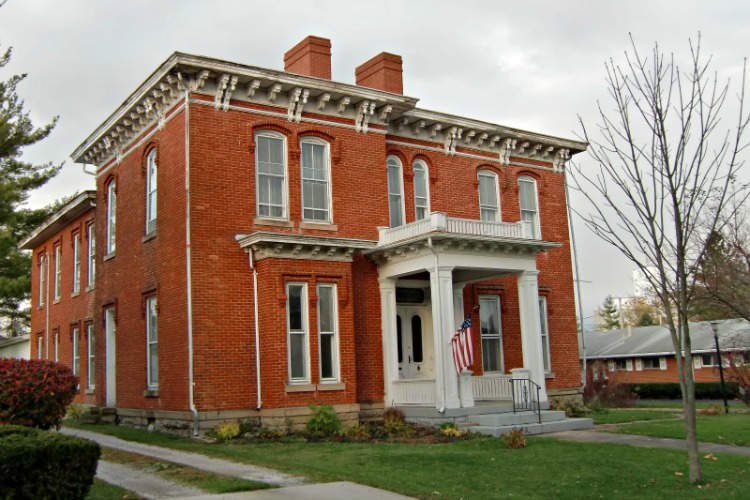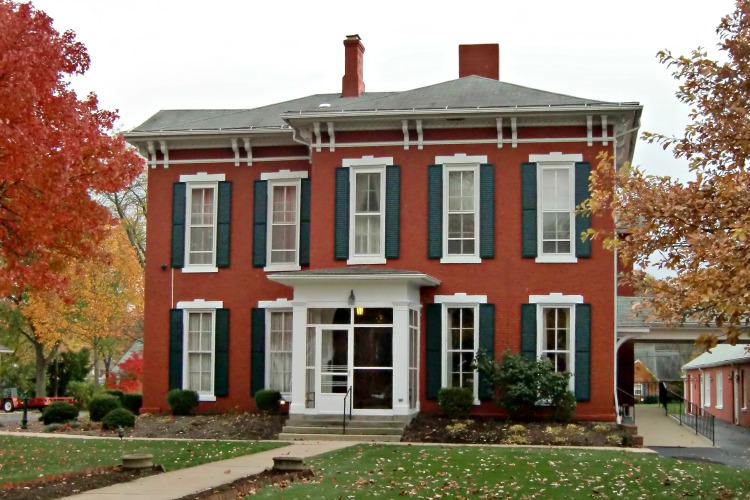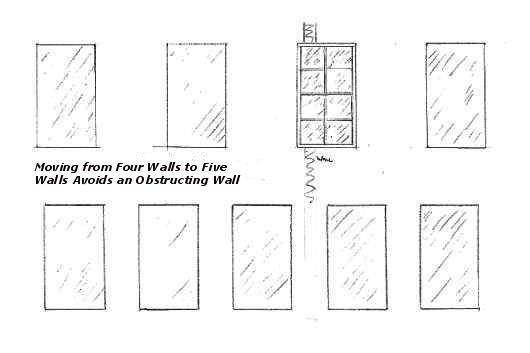Fenestration
The Affect of Window Placement on Home Design
Fenestration is pattern or strategy for the placement of windows in a building. As windows are large and noticeable design elements that pattern greatly affects the overall look of a home.
I started this series of articles talking about window placement only to cruelly disappoint you. I hope to remedy that situation with this article on fenestration.
In review, in my first article we learned that if you save money by eliminating the windows from one side of your house you will not be happy and you will avoid those dark rooms like the plague.
Here we are going to brighten up that house by installing some windows.
Fenestration from the Inside
There are two viewpoints to consider, inside and outside. Today we will discover that there is a tension between these two views. What works for one may not work for another.
The inside view is going to be conditioned on the purpose of the room. Some rooms need a little privacy. Bathrooms and bedrooms come to mind. These rooms usually work best with the bottom of the windows positioned well up off the floor. This at least obscures the view from the street of the lower half of the occupant’s body. Walls provide privacy. Windows do not. They may be necessary, but you need to balance out the view and the light they provide with your need for security from wandering eyes.
This also affects the number of windows you want. A bank of windows can work great in a living room. It is probably too much for the private rooms.
Consider your rooms with an eye to their furnishings. A hundred years ago rooms were much more sparsely furnished. Now we are likely to have sofas and chairs backed up against every wall in the room. If that is the case does it make sense to have windows that come down low to the floor? Such tall windows can look great and they afford a great view, but they also look a little awkward when the lower part of the window is covered up by a couch. My house has this problem, and no matter how we arrange the furniture in our living room we have a window partially blocked.
Next consider the room and its proportions, and the overall symmetry of the room. When you place windows on those walls you are affecting the basic harmony of the room. Every room is different so I can’t give a simple rule, just consider what that room will look like with windows in different places.
These windows get interpreted as simple shapes by your mind and they have to work with the shapes of the walls and the ceiling. Tall windows are likely to break up the shape of the wall, so that you end up with two big shapes to the left and to the right of that window. Once that happens then the balance between those two shapes becomes important.
If this is sounding too complicated, just remember this simple rule: it has to look right.
For a deeper look at windows and interior lighting check out this article on daylighting.
Fenestration from the Outside
From the outside similar balances have to be considered, but sometimes you find that what looks good from the inside doesn’t look so good from the outside. From the inside you consider window placement on a room-by-room basis. From the outside you have to consider the whole.
Usually this means you want the windows lining up and evenly spaced or spaced to form groups of windows. Without getting into all the Gestalt principles at play here just remember this: helter-skelter is out. Windows should look neat and placed, not thrown up to wherever they would stick.
Grouped or evenly spaced? Consider these nearly identical Italianates with two different window placements. Both work, because they are internally consistent.
There are some deconstructivist post-modern architects who actually design buildings with misplaced windows to make the viewer feel uncomfortable. They want to challenge the viewer to reconsider architecture. This should not be your goal. As a homeowner you want people to feel comfortable about your house and in your house. A house where every window appears to be in exactly the right spot will help.
Complications to Fenestration
Placement is complicated by the internal structure of the house. Sometimes a wall is right where you want to place a window. In such cases you have a choice. Move the window or move the wall. Probably it makes more sense to move the window. Consider this example below where even spacing of four windows results in one window placed right in front of a wall. A solution in this case is to use five evenly-spaced windows.
Fenestration and Surroundings
Where those windows will need to be will vary by house, by style and even by your neighborhood. Different styles and different eras have placed windows somewhat differently. If you have a historical style, then let the windows confirm to the historical standards. This is all the more important if your neighborhood has a strong aesthetic. In a block of Colonial Salt-Shaker’s do you want to be the lone house with wrap-around plate glass windows? Think harmony with your surroundings and let your surroundings inform your decisions.
As I wrap up this discussion I find that once again I have provided more questions than answers. Perhaps I will have better luck with my next article where I will look at some successful and not-so-successful window placements.
To Top of Page - Fenestration
To First Article in this series - Window Placement
To Window Materials in Window Replacements
Home - Home Design
Please!







New! Comments
Have your say about what you just read! Leave me a comment in the box below.